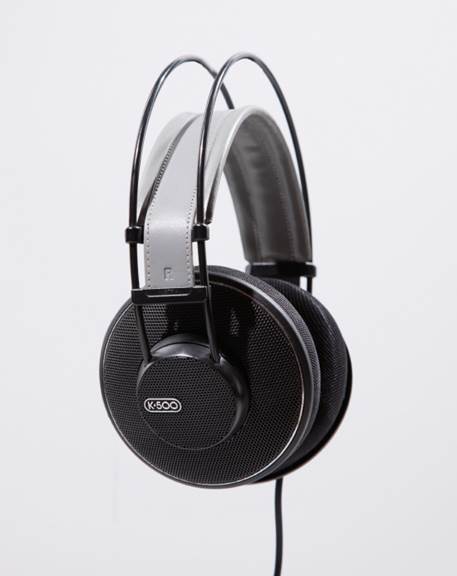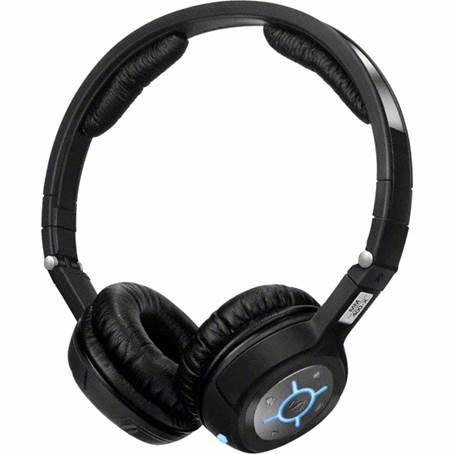AKG K500
Price: $270

Use
an amp: these headphones should be used in the home, and as such deserve a
dedicated headphone amp to be at their best
The K550s are big in every way, with large
earpieces featuring 50mm drivers, a broad headband, and a long, chunky cable.
They may look a little like a pair of road-digger’s ear-defenders, but they’re
still relatively light and comfy, even during long sessions.
The K550s are a hugely capable pair
of closed-back headphones that simply don’t sound closed
An airy, spacious listen
These are an over-ear, closed-back design,
a configuration intended to isolate the wearer from noise while also preventing
sound leaking from the cups.
They perform both duties admirably, but
what’s really impressive is just how unlike a closed-back pair of headphones
they sound.
A FLAC file of Etta Jame’s I’d Rather Go
Blind delivered via the Furutech ADL GT40 headphone amp is airy and spacious in
a way that’s beyond most closed-back designs.
The soundstage is well-defined, and
separates individual threads of the recordings as well as it integrates them
into a coherent whole.
The vocal part, from which, in this
instance, the entire recording hangs, has ample space and is packed with information.
The K550s are sweetly communicative, handle
tempos in a natural, unforced manner and punch into and out of low-frequencies
with precision.
Even though they relish the lushly analogue
sound of Etta James, they have sufficient drive and attack to make LAdytron’s
Seventeen an exciting, hard-hitting and dynamic listen.
They’re particularly adept at teasing out
the fine details at the back or the edge of the soundstage, and give a vivid,
high-resolution insight into a mix.
They’re a hugely capable pair of
closed-back headphones that simply don’t sound closed. We can see these staying
at the top for some time…
Best noise-cancelling headphones
Bose QuietComfort 15
Price: $420

Living
with it: These are a superb option for a long-haul flight. The batteries last a
fairy long time, but do remember to carry spares.
Hell, as Jean-Paul Sartre so nearly
observed is other people’s racket. If you spend a lot of time on public
transport (plane, train, omnibus), you’ll find that music on headphones is far
more enjoyable if you’re able to dial out all that pesky background Furore.
Bose’s QuiteComfort 15 headphones use a
battery-powered noise reduction system, along with an ‘over-ear’ design, in an
effort to cancel out background hubbub. If noise-cancelling headphone had been
invented during Sartre’s time, he’d have been first in line for a pair…
These are relatively lightweight and
winningly comfortable headphones – they’ll fold quite flat when not in use and
don’t make your ears sweat too badly when they are.
Rhythmically surefooted and
dynamically adept, the QuiteComfort 15s have driven and attack to spare
A composed, enjoyable listen
And they perform extremely well. There’s as
much brilliance to high frequencies as is acceptable, so anyone with a
bright-sounding headphone amp, a shrill MP3 player or an aversion to a gleaming
high end should audition them thoroughly. In every other respect the QC15s are
a composed and enjoyable listen.
Detailed, punchy and spacious, the Bose
have the low-frequency determination to cope with Squarepuaher’s Come On My
Selector and the insight to deliver the subtleties of Lambchop’s National Talk
Like a Pirate Day intact. Rhythmically surefooted and dynamically adept, they
have driven and attack to spare.
Background noise is dismissed without the
hiss that lesser designs can introduce. There’s no discernible impact on the
integration of the frequency range or the information delivered. When we
originally reviewed these headphones in 2010, they won a Best Buy Award. Same
story in 2011, when they added a smartphone-friendly, microphone-toting cable
to their box. And they’ve done it again – it’s a hat-trick of Best Buys for the
QuiteComfort 15s.
If you don’t flinch at the premium price
and you can handle the top-end assertiveness, these Bose are a hugely effective
solution to the rest of the world’s background noise.
Best wireless headphones
Sennheiser MM 400 X
Price: $345

What’s
apt-X? It’s a higher quality version of the ubiquitous Bluetooth. And it’s
worth seeking out: your tunes will sound better for it
Sennheiser covered itself in glory in this
category last year with its stonking PXC 310 BT headphones, which used wireless
Bluetooth to deliver your tunes, and added some pretty effective
noise-cancelling tech into the mix, too.
We love Bluetooth when it’s of the
high-quality apt-X variety, and thankfully the audio-friendly technology is
starting to hit more and more devices. You might well already own something
with it built in, such as a MacBook running OS X 10.6.4 or later, or the new
HTC One X or Samsung Galaxy S3 smartphone. If so, you should really take
advantage by adding a pair of these apt-X-toting headphones.
Most importantly, these high-tech
headphones sound great. They don’t deliver the deepest bass, but they’ve got
plenty of detail and directness, especially in the vocals.
Respectable battery life
Like the 310s before them, these Bluetooth
cans boast a compact, lightweight and foldable design, a set of controls on the
right-hand cup for navigating your music, and the option of connecting a cable
for going wired when you’re on a plane or when the 10-hour battery runs out.
There’s even a built-in mic for smartphone users. In fact, the only thing
missing is noise-cancelling, which is available if you stretch to the MM 450 X
version.
They’re neutral-sounding, too – and we mean
that in the best sense of the word. Given a tonally challenging track such as
the warm-sounding Please Read the Letter, on the Robert Plant and Alison Krauss
collaboration Raising Sand, they don’t overwhelm proceedings with low-frequency
information but nor do they sap the languid drum part of punch. That’s a tough
balancing act, but the 400 Xs never waver.
They’re not quite up to the standard of
dedicated wired headphones at the same money (although the apt-X performance is
almost as good as their wired sound), but if you want the convenience of
Bluetooth in a very portable and sonically capable headset, you really can’t go
wrong with these Sennheisers.
Closed back vs open back
Closed or open? It’s the fundamental
difference in on-ear headphone designs. Traditionally, open-backed headphones
have always sounded best. Freed from the internal resonances and damaging
reflections inherent in having an enclosure around a drive unit, open-backed
units tend to produce more detailed and agile results.

There are downsides. Closed-back cans
usually produce more powerful bass, and also provide a degree of isolation from
external noises. And they don’t leak sound, so people around you aren’t
disturbed. On a crowded bus or train, or even if you’re listening to music at
home while someone else watches TV, that’s a good thing.

Jargon buster
Wireless
Until recently, KLEER technology was pretty
much your only option for quality wireless sound. The arrival of the apt-X
codec for Bluetooth has changed that. Although, unlike KLEER, it still involves
some compression, the apt-X codec is efficient enough that the drop-off
compared with a standard wired connection is pretty small.
And it’s a two-way connection: a pair of
Bluetooth headphones can send commands to control your player wirelessly. Some
can also be used for hands-free phone calls.
While aptX isn’t built in to loads of music
players right now, many are on the way, and we’re expecting it to be a common
phone feature.
Noise cancelling
This kind of design is usually battery
powered and will reduce background noise, such as the drone of plane engines,
for your listening pleasure. It’s not unusual for such designs to tweak tonal
balance to improve things, either. However, some add hiss in the process.
Noise isolating
Noise-cancelling designs use electrical
means to lessen external noise; isolating designs fill your ears to block
disturbance physically.
In-line mic
Many headphones now come with an inline mic
that will allow you to take a call without the inconvenience of taking your
phone out. Take care with compatibility.